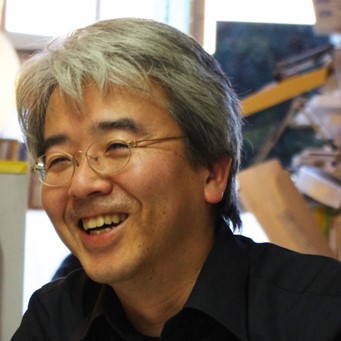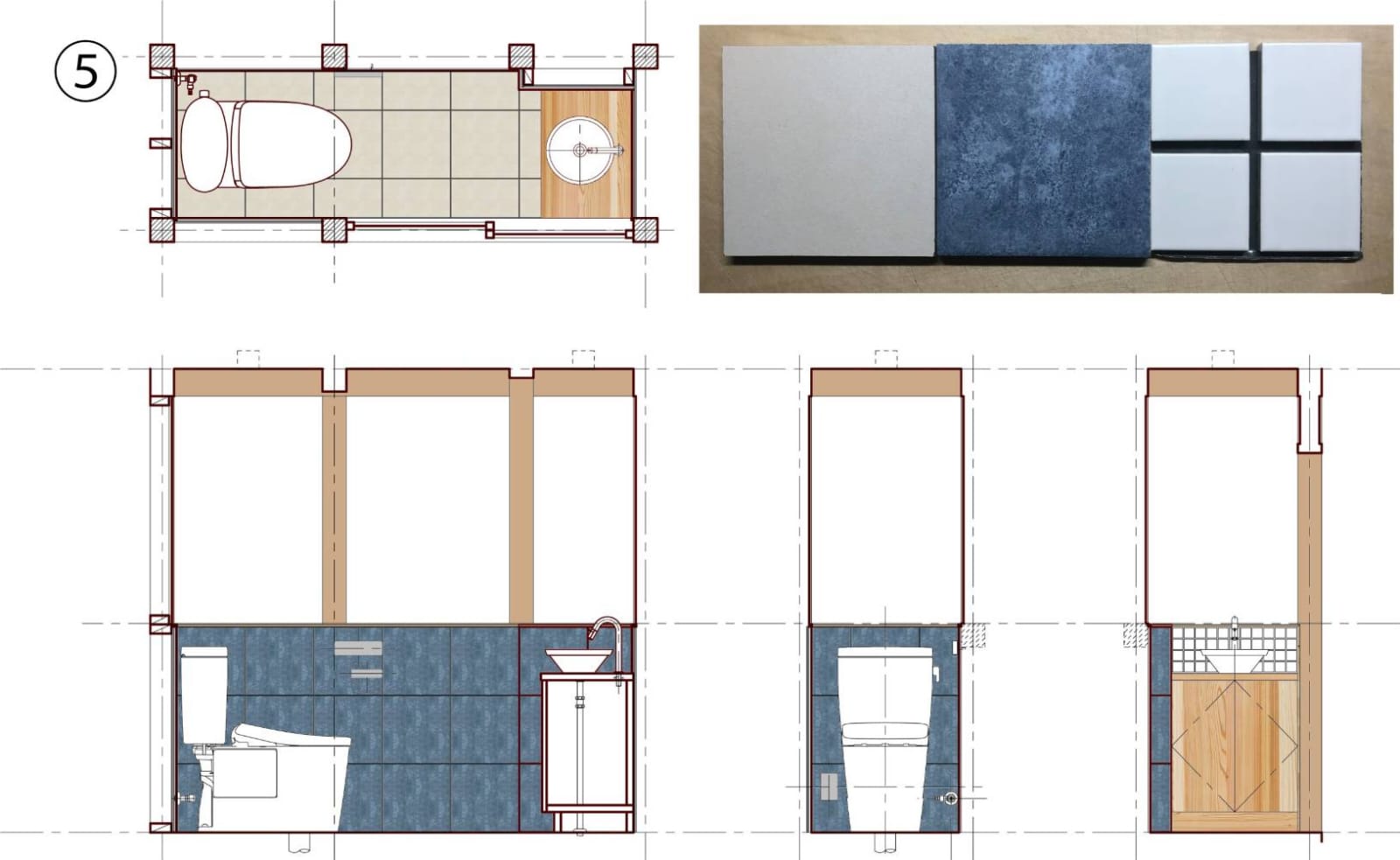How it started
One of the four prefectures on the island of Shikoku, the terraced mountainsides, cavernous gorges and emerald rivers of Tokushima are still relatively unknown to many from outside Japan. Even less well known is Sanagochi, the last village remaining in Tokushima, home to less than two thousand residents and known mainly for a large yet flavourful species of strawberry.
Scouring the internet, it was here that Daniela found her perfect soon to be home. She wanted a single storey building, surrounded by trees and in solitude. It had to be straw thatched, with the exposed beams of the roof visible on the inside. As part of the process of checking the house prior to sale, Steven Huang of Koryoya travelled to Tokushima to take photos and hold a video call with Daniela so she could see the conditions for herself and ask any questions.


The exposed wooden beams of the kominka’s roof were exactly what Daniela had dreamed of.
She also learned during this visit that a second building was on the property: a warehouse also built traditionally with mud and straw. She enjoys imagining future uses for this unexpected space: growing mushrooms, creating a large meeting room, or even a sauna.
The video call with Koryoya helped Daniela make her decision final. “When I saw the house, I couldn’t imagine anything more perfect for me. It was tidy, clean, and completely empty. It was easy for me to imagine how to renovate.”


The entrance and Tatami room of the Kominka before renovation.
Buying A Slice Of Paradise
The process of buying the house was surprisingly easy, supported by Koryoya and the real estate agency. Daniela made an initial payment in cash on the day she signed the contract, and the rest of the amount in the following month via bank transfer. The agency helped her with paying taxes as well.
After the sale was complete, Daniela was warmly welcomed by her new neighbours. “They are very organised, engaged in cleaning water and separating rubbish. They live connected to nature. Each member of the community takes responsibility for a parcel of land, and there are many meetings. In the two weeks I was there, I met everybody!”


Daniela takes a selfie with Mayu, who cares for the house while she is away. “Part of my job is understanding relationships. How I can relate to people who are completely different from me.” – Daniela Terrile.
Communities and interconnected systems are topics that fascinate Daniela. The Italian lifelong learner, teacher and traveller has boldly ventured into new cultures throughout her life. She opened a school in Iran, speaks six languages, and works in the European Commission as a Systemic Coach. She also has a deep interest in architecture, and knows the process of buying and renovating a traditional farmhouse in another country is not one that can be done alone. It must be a team effort.

Surrounded by forests and away from the hustle of cities, the kominka offers visitors a chance to reflect and reconnect with nature. “They ask me thousands of times, “Why Sanagochi, nobody comes here?” I said, “Exactly! I want to be at peace. I want to be surrounded by nature.”
Team Work Makes The Dream Work
Daniela’s team MVP, her tie to the community and leader of a smooth renovation process, is architect Teruaki Uchino. “Without Uchino-san, nothing is possible.” says Daniela.
Uchino-san specialises in the renovation of traditional Japanese houses, lives in Sanagochi, and speaks fluent English. He interprets for Daniela during her visits to Japan, and keeps her closely apprised of the construction process when she returns to Europe, sending her pictures and planning documents.


Uchino-san and Daniela exchange messages frequently. While she trusts him to make many of the decisions, he wants her input on design and colour choices.
“He has carte blanche.” Daniela said, spreading her hands wide to emphasise the scope of her statement, “This is an empty piece of paper he can fill.” The renovation process takes time. From June to October 2023, while Daniela was in Europe, Uchino-san visited the house, made plans, and drafted budgets in consultation with her. They decided on new features for the house like a wood burning stove in the living room and a special ceramic pot for cooking rice in the kitchen.
During her second visit to Japan, Daniela signed a contract with a construction company, signalling the start of hands-on renovations. Prior to any permanent changes being made, Daniela and her team took part in a Shinto ceremony to bless the endeavour.


(Left) A Shinto kannushi blessed the house before beginning construction. (Right) Uchino-san meets the construction company once a week to discuss the plans for renovations.
Uchino-san describes the process of renewal as a delicate balancing act. “We want it to make it beautiful, and the best for Daniela.” He explained. “I like it.” She answered, then expanded: “It’s not about perfection. It’s about the respect we have for the house. We keep a part of the wall so people can see where we’ve come from, and what we’ve had to change to make it comfortable. But, it’s an old house. We keep it old. ”
Fixing such old houses can come with unexpected and expensive surprises however, such as floors eaten out by termites and ice damage in the roof. Whenever issues arise, the team sends pictures to Daniela with an updated budget. She accepts this with equanimity. “I trust the process.” Daniela says with a smile.






Photos of the renovation in process. The project is expected to be completed in Spring of 2024.
A Deep Bond
While trust is a key component in the relationship between Daniela and Uchino-san, another is the shared attachment to the house that can only be described as a spiritual connection. Uchino-san explained, “On the morning we first visited the house, I saw it and thought, it looks cosy. But then something vibrated within me. I felt something from the mountain.”
His explorations brought him to an immense stone and torii gates leading to a shrine venerating it. The “heartbeat” of the stone was the source of the strange vibrations Uchino-san felt. A nameplate over the shrine named its spirit as one of the three creator gods of Japan. When Daniela arrived, he brought her up to visit the shrine and that day they named the house: “Mother Stone”.


The shrine and the "mother stone" just a few minutes walk from the house.
Advice For Those Looking To Buy
Buying and renovating a kominka can be a long and multi-faceted process. But many hands make light work. Daniela’s biggest piece of advice to those considering following her path is: “Look for an architect from the very beginning.”
Her experience with Koryoya also gave her a lot of confidence and comfort. Despite having not yet visited Japan, she was able to virtually explore the house with him, and communicate smoothly with the real estate agent.
“Steven at KORYOYA was precise and organised. He helped me and was always present and professional.” Daniela herself has adjusted to Japanese culture, showing a high level of respect for the traditions of the country and her new community. Teamwork is a two way street.
Finally, Daniela believes with conviction that there is no such thing as coincidence. If you are on the right path, the people you need will come to you.

Daniela: “ I never had a doubt. I trust the process and everything flowed.”
Once the renovation is complete, Daniela is hoping to develop the house as a place of rest, revitalisation and learning. Currently without a long-term visa, she plans to live in Japan for periods of three months, twice a year. Building on the concept of “Mother Stone”, Daniela and Uchino-san, along with other experts in the field, intend to hold workshops on leadership and communication. Tapping into local knowledge, as well as Daniela’s own studies, she will use the mushroom as both a metaphor and a practical endeavour as she hopes to grow them in the warehouse out the back.
In embracing the spirit of "Mother Stone," Daniela’s journey embodies the strength found in collaborative efforts. Her adventure, marked by trust and a deep reverence for nature, showcases how a mix of vision, tradition, and community can craft not just a home, but a haven for growth, connection, and renewal.




















